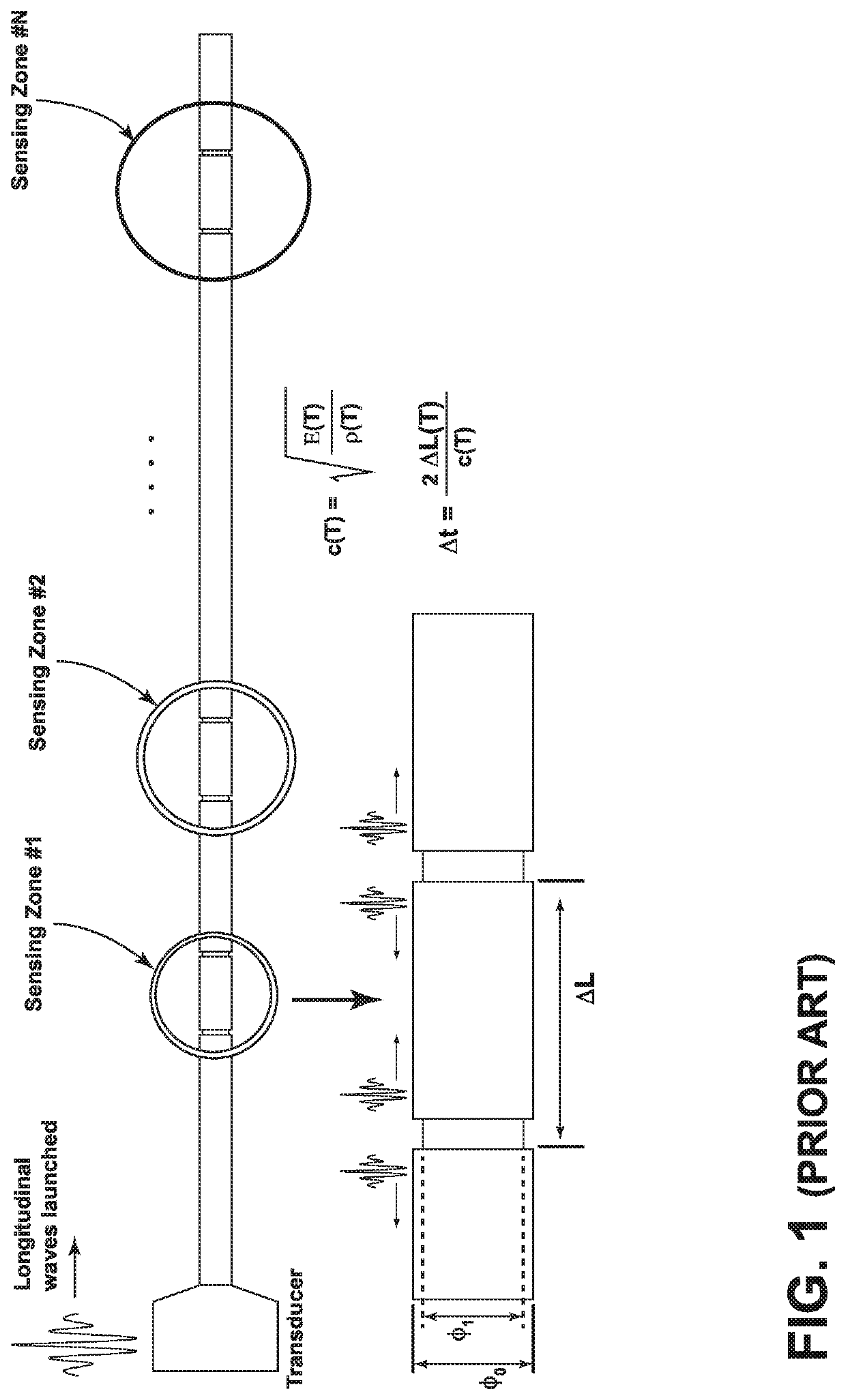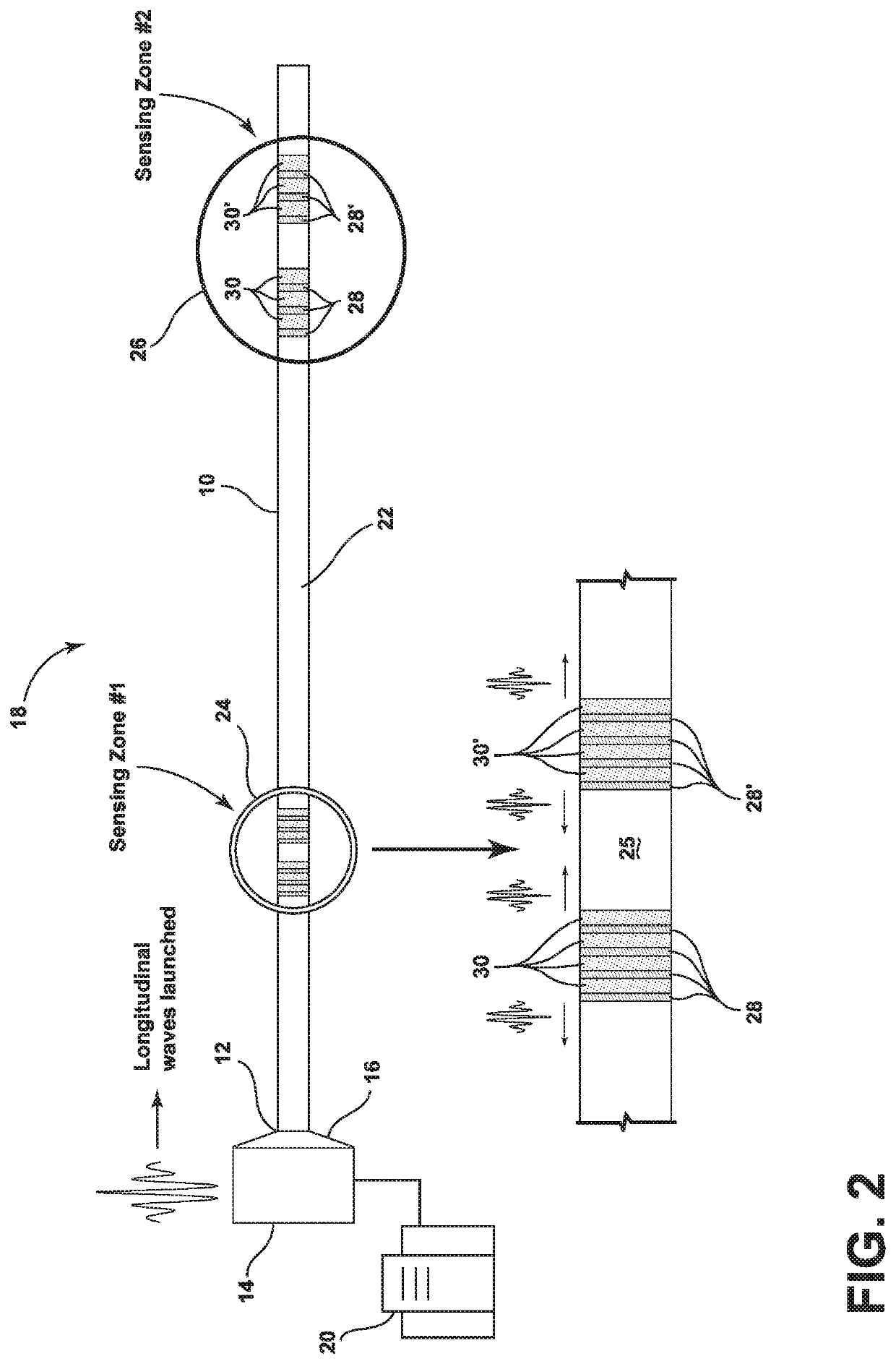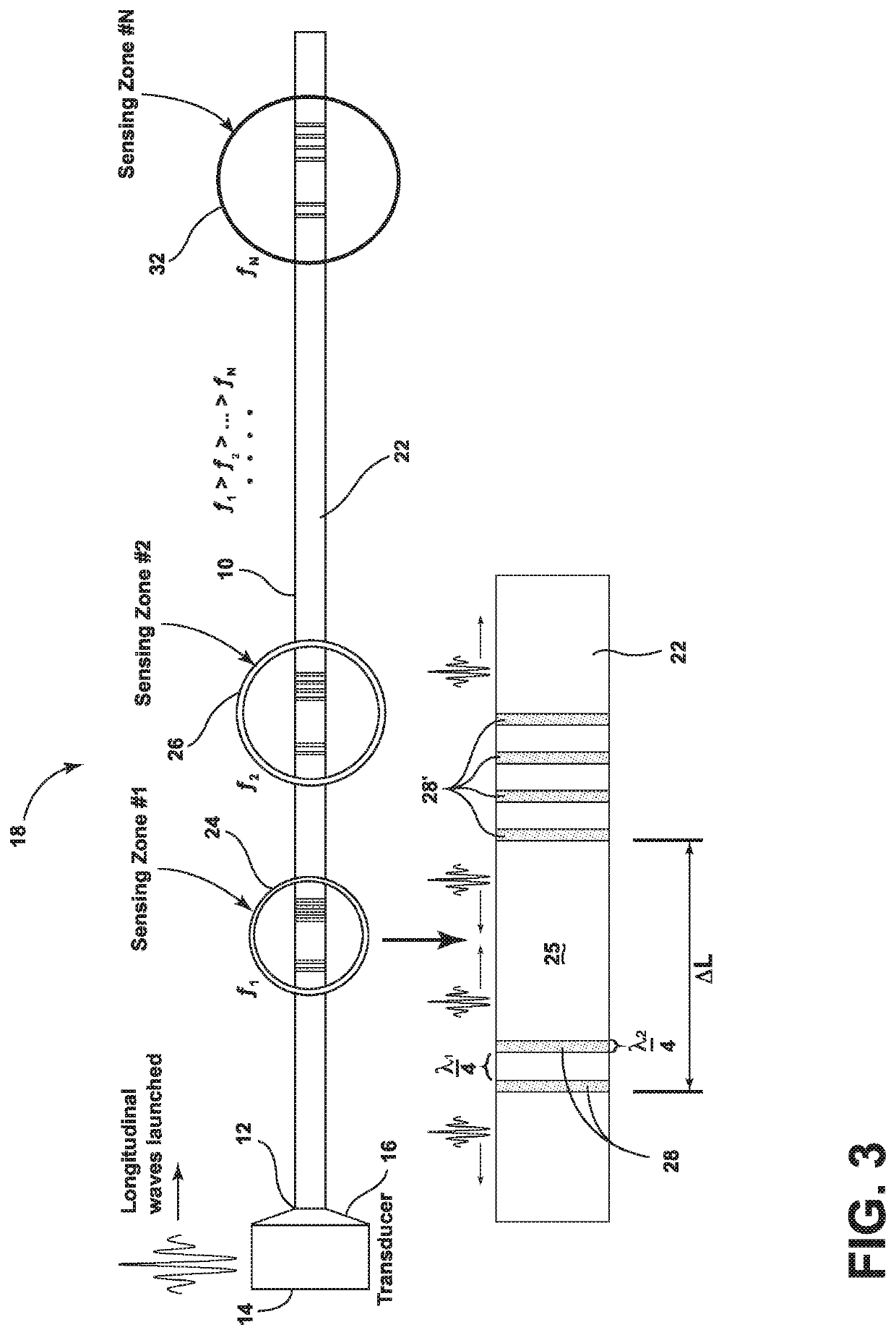Ultrasonic waveguide for improved ultrasonic thermometry
a technology of ultrasonic thermometry and ultrasonic waveguide, which is applied in the direction of heat measurement, instruments, and solids analysis using sonic/ultrasonic/infrasonic waves, can solve problems such as energy loss, and achieve the effects of reducing the number of instrument penetrations, minimizing obstructions, and high sensitivity
- Summary
- Abstract
- Description
- Claims
- Application Information
AI Technical Summary
Benefits of technology
Problems solved by technology
Method used
Image
Examples
Embodiment Construction
[0023]As discussed herein, the current embodiments include ultrasonic waveguides having a series of sensing zones. Each sensing zone is designed to be highly reflective to a narrow frequency band while being transparent to other frequencies. A transducer launches a longitudinal elastic wave of desired waveform and frequency. The wave propagates down the waveguide, and is reflected from the sensing zone that is tuned to that frequency. By detecting arrival time differences between reflected waves from adjacent reflection features that are separated by a known distance, the temperature at each sensing zone can be accurately determined.
I. Sensing Zones of Dissimilar Materials
[0024]Referring now to FIG. 2, an ultrasonic waveguide is illustrated and generally designated 10. The waveguide 10 is coupled at a proximal end 12 to an ultrasonic transducer 14. A conical transition coupling 16 can be used to focus the ultrasonic energy. The waveguide 10, the transducer 14, and the transition cou...
PUM
| Property | Measurement | Unit |
|---|---|---|
| frequency | aaaaa | aaaaa |
| frequency | aaaaa | aaaaa |
| length | aaaaa | aaaaa |
Abstract
Description
Claims
Application Information
 Login to View More
Login to View More - R&D
- Intellectual Property
- Life Sciences
- Materials
- Tech Scout
- Unparalleled Data Quality
- Higher Quality Content
- 60% Fewer Hallucinations
Browse by: Latest US Patents, China's latest patents, Technical Efficacy Thesaurus, Application Domain, Technology Topic, Popular Technical Reports.
© 2025 PatSnap. All rights reserved.Legal|Privacy policy|Modern Slavery Act Transparency Statement|Sitemap|About US| Contact US: help@patsnap.com



